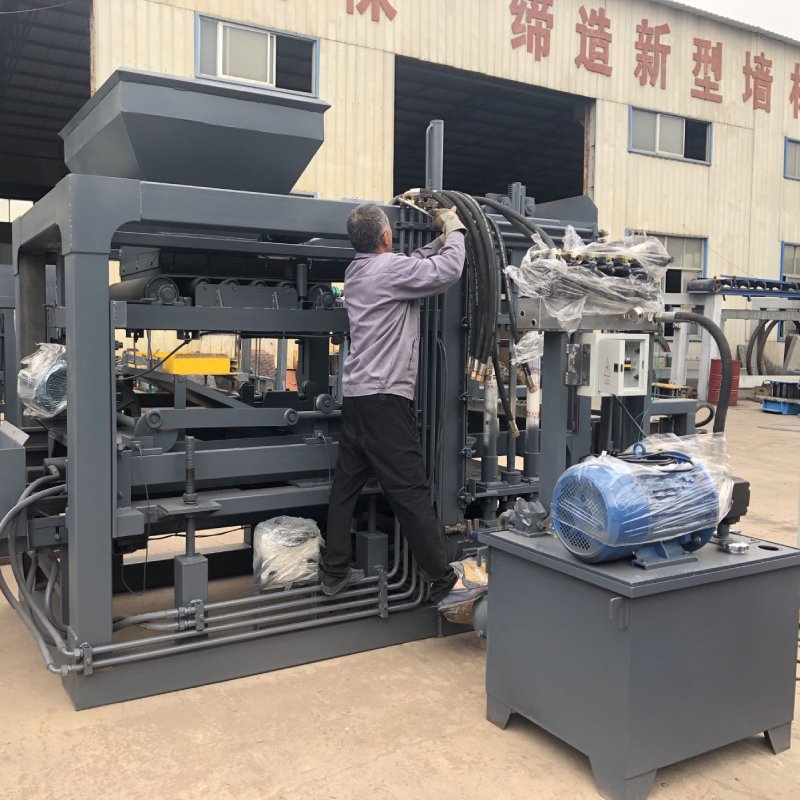
Image source :Aiweiblockmachine
Title: Tailoring Tomorrow: Exploring Customization and Personalization Trends in Full-Automatic Block Design
Introduction
In the rapidly evolving landscape of construction and manufacturing, the role of full-automatic block design is undergoing a profound transformation. As the demand for unique and purpose-built structures grows, the industry is witnessing a surge in customization and personalization trends. This article delves into the exciting developments in full-automatic block design, exploring how intelligent automation is enabling architects and builders to create bespoke solutions that cater to the diverse needs of modern construction.
1. **Parametric Design Revolutionizing Flexibility**
Parametric design is at the forefront of the customization wave in full-automatic block design. This approach allows designers to define parameters and constraints that guide the generation of design variations. In the context of full-automatic block manufacturing, parametric design provides unparalleled flexibility by enabling architects to adjust dimensions, shapes, and textures effortlessly.
The ability to quickly iterate through design variations ensures that each block can be tailored to the specific requirements of a project, fostering creativity and adaptability in construction.
2. **User-Centric Interactive Design Platforms**
Interactive design platforms are reshaping the collaboration between designers, architects, and manufacturers in the full-automatic block design process. Cloud-based platforms and real-time collaboration tools empower stakeholders to actively participate in the design process, offering instant feedback and suggestions.
These platforms facilitate a user-centric approach, where end-users, architects, and builders can contribute to the customization process, ensuring that the final product aligns closely with the envisioned outcome.
3. **Digital Twins for Virtual Prototyping**
Digital twins, virtual replicas of physical objects or systems, are gaining prominence in full-automatic block design. These digital counterparts allow designers to experiment with various configurations, test structural integrity, and simulate real-world performance before the actual manufacturing process begins.
In the realm of full-automatic block design, digital twins enable virtual prototyping, reducing the need for physical prototypes and minimizing the risk of errors in the final product. This trend enhances customization by providing a comprehensive understanding of the block’s behavior in different scenarios.
4. **AI-Driven Optimization for Intelligent Designs**
Artificial Intelligence (AI) is making waves in full-automatic block design by offering intelligent design optimization. AI algorithms can analyze vast datasets, identifying patterns and correlations that human designers might overlook. This data-driven approach allows AI to suggest design modifications that optimize performance, durability, and even energy efficiency.
Incorporating AI-driven optimization in full-automatic block manufacturing ensures that each block is not only customized to meet aesthetic preferences but also optimized for structural integrity and sustainability.
5. **Sustainable Customization for Green Building**
The sustainability movement is influencing customization trends in full-automatic block design. Manufacturers are increasingly exploring sustainable customization options, incorporating eco-friendly materials, modular designs, and energy-efficient features into their blocks.
This trend not only aligns with environmental concerns but also caters to a growing market demand for green building practices. Full-automatic block design is becoming a key player in sustainable construction by offering personalized solutions that contribute to eco-conscious building practices.
6. **Blockchain for Design Authentication**
Blockchain technology is emerging as a tool for ensuring design traceability and authenticity in full-automatic block manufacturing. By recording design specifications, material details, and production history on a blockchain, manufacturers can provide an immutable and transparent record of each block’s journey from conception to production.
The use of blockchain ensures that end-users, architects, and builders can verify the authenticity and compliance of customized blocks, instilling confidence in the quality and origin of the final product.
Conclusion
The customization and personalization trends in full-automatic block design represent a paradigm shift towards more adaptable, sustainable, and collaborative manufacturing processes. As technology continues to advance, the integration of intelligent automation, parametric design, AI-driven optimization, and blockchain authentication is reshaping the landscape of full-automatic block manufacturing. The future promises a harmonious blend of creativity, adaptability, and sustainability, where each block is a unique testament to the evolving needs and aspirations of the construction industry.
